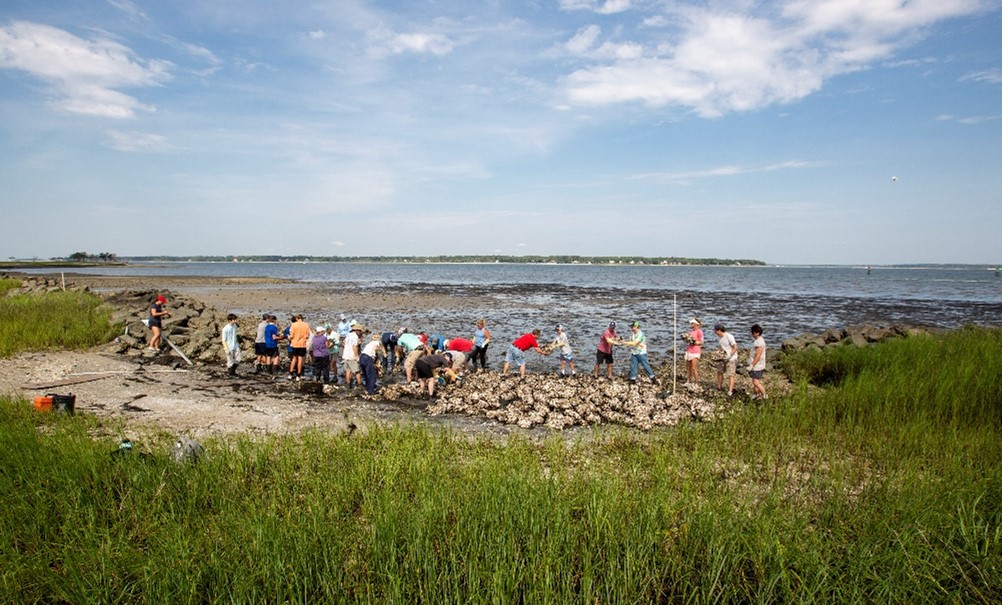VOLUNTEERS BUILD OYSTER REEF AT HARBOUR TOWN GOLF LINKS
Local organizations construct vital habitat along iconic 18th hole
HILTON HEAD ISLAND, S.C. (June 23, 2022) – There’s a new oyster reef along the 18th fairway of famed Harbour Town Golf Links thanks to the efforts of local volunteers. The reef—on the banks of Calibogue Sound—is a joint effort of The Outside Foundation, The Sea Pines Resort, and The South Carolina Department of Natural Resources (SCDNR).
More than 700 bags of oyster shells, each weighing about 20 pounds, were transported to the shoreline then put in place at low tide. Several local groups pitched in, including members of Hilton Head Boy Scout Troop 222.
The bags created a manmade reef that will serve as a habitat for larval oysters, where they can attach and grow. The reef also will help control erosion due to boat traffic and storms, as well as support other wildlife. Oysters help keep waterways clean by filtering large amounts of water, so the new reef contributes to the health of the local ecosystem while preserving one of Hilton Head’s most famous views.
“The Sea Pines Resort is supportive of this and other environmental initiatives,” said Steve Birdwell, President, The Sea Pines Resort. “We know how fortunate we are to live on this beautiful island and will do everything in our power to protect our natural resources.”
The Hilton Head-based Outside Foundation operates the Oyster Recycling and Reef Building Initiative, which has created oyster shell drop-off sites, organized oyster shell collection from roasts and restaurants, and to which The Sea Pines Resort’s restaurants have donated for years. The Foundation also hosts shell bagging events where volunteers prepare quarantined shell for installation. SCDNR providedresources for the program through its SCORE oyster shell recycling program and directed the construction. The Sea Pines Resort, which encourages eco-initiatives throughout its operations and through its partnership with other organizations, was key to facilitating this oyster reef installation by allowing access through the property to the protected areas.
